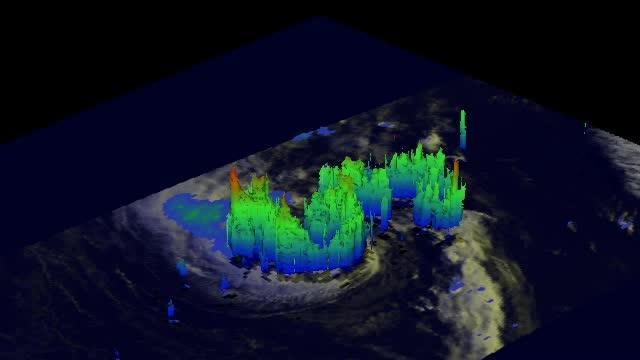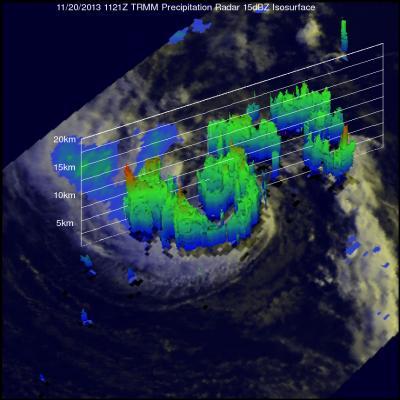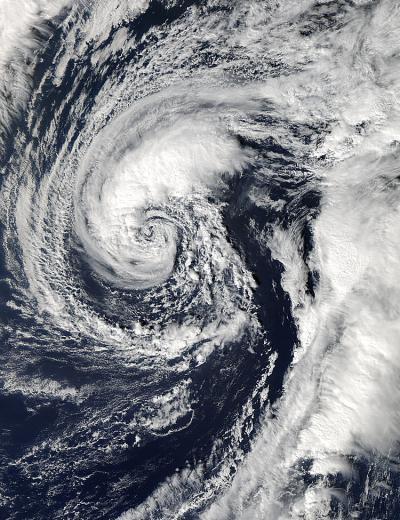TRMM Precipitation Radar data were also used to create a 3-D image that showed Melissa's structure. The TRMM data revealed that the tallest towers, reaching heights of over 13km/~8 miles, were located in a band of rainfall to the northwest of Melissa's center. The strongest intensity radar echo of over 49dBZ was returned from an area of heavy convective storms near Melissa's center. This heavy convection near the center signaled Melissa's transition from a subtropical storm to a tropical storm.
At 1500 UTC/10 a.m. EST, Melissa's maximum sustained winds were near 60 mph/95 kph. Melissa is a good sized storm, as tropical storm force winds extend outward up to 205 miles/335 km from the center.
The National Hurricane Center expects little change in strength over the next 24 hours, but does expect Melissa to lose her tropical characteristics thereafter, so her life as a tropical storm will be quite short.

This is a simulated 3-D flyby animation over subtropical storm Melissa using TRMM satellite data on Nov. 20 at 6:21 a.m. EST. Red indicates heavy rainfall.
(Photo Credit: SSAI/NASA, Hal Pierce)
Melissa's center was located near latitude 35.6 north and longitude 47.7 west, about 1,155 miles/1,860 km west of the Azores. The Azores is a group of nine volcanic islands in the North Atlantic Ocean. The island group is about 1,500 km/930 miles west of Lisbon, Portugal.
Melissa is moving toward the east-northeast near 30 mph/48 kph and this general motion is expected to continue during the next couple of days. The estimated minimum central pressure is 988 millibars.
Although Melissa is far from land, the storm is still generating large ocean swells, rip currents, and dangerous surf in Bermuda, parts of the Northern Leeward Islands, Puerto Rico and Hispaniola today.
The National Hurricane Center expects Melissa to continue moving northeast and pass north of the Azores.

NASA's TRMM satellite saw Melissa on Nov. 20 after it became tropical. The tallest thunderstorms, over 8 miles high, were located northwest of the center.
(Photo Credit: SSAI/NASA, Hal Pierce)

The MODIS instrument aboard NASA's Aqua satellite captured this image on Nov. 19 at 16:30 UTC/11:30 a.m. EDT of Subtropical Storm Melissa in the North Atlantic Ocean.
(Photo Credit: NASA Goddard MODIS Rapid Response Team)
Source: NASA/Goddard Space Flight Center